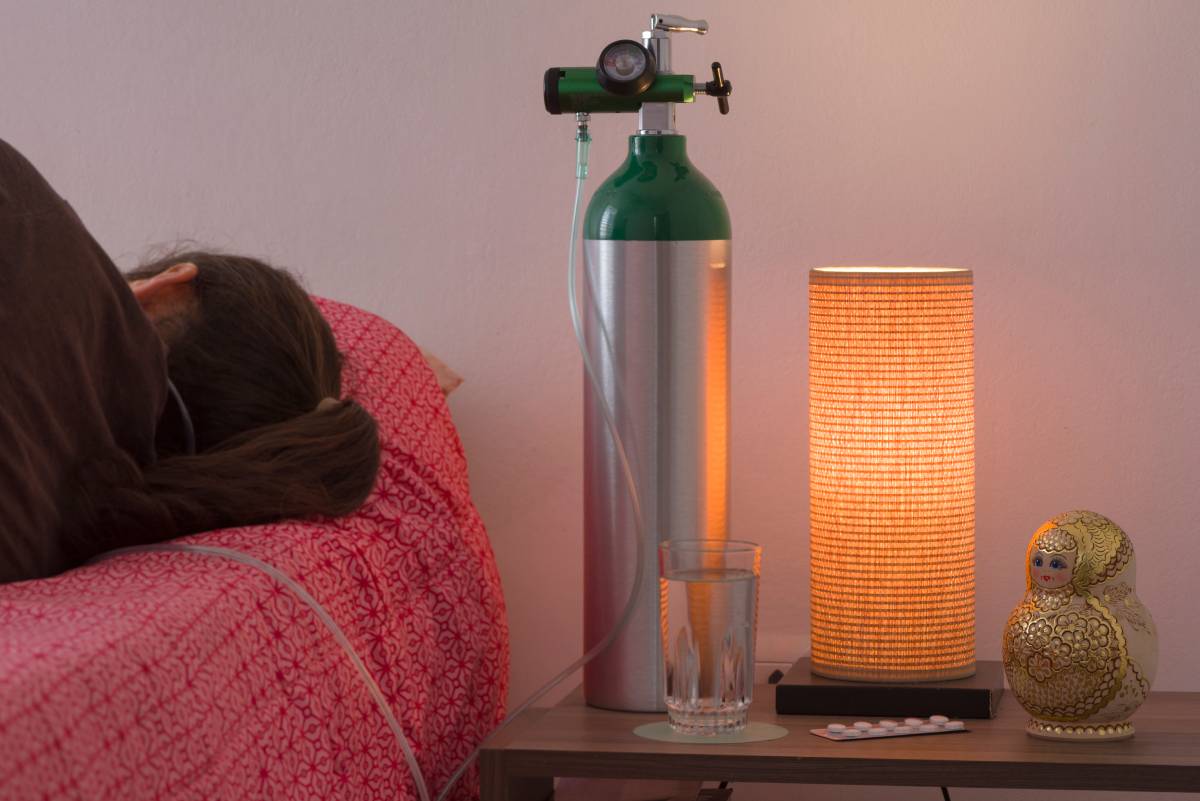At-home oxygen therapy plays a critical role in the management of patients with chronic respiratory conditions, providing supplemental oxygen to alleviate hypoxemia and improve overall quality of life (1). This therapy is commonly prescribed for individuals diagnosed with chronic obstructive pulmonary disease (COPD), emphysema, chronic bronchitis, pulmonary fibrosis, and other lung diseases characterized by impaired gas exchange. As anesthesiologists, it is imperative to appreciate the significance of at-home oxygen therapy in the perioperative setting, as it presents unique considerations and challenges that can influence anesthesia management and patient outcomes.
Patients reliant on at-home oxygen therapy often have compromised respiratory function, characterized by chronically low baseline oxygen levels (hypoxemia) (2). This baseline hypoxemia necessitates careful preoperative assessment to evaluate the severity of the patient’s respiratory condition and their dependence on supplemental oxygen. Detailed preoperative evaluation should include a comprehensive history of the patient’s respiratory disease, previous exacerbations, current oxygen therapy regimen, and functional status. Additionally, objective measures such as pulmonary function tests, arterial blood gas analysis, and imaging studies may be utilized to assess pulmonary function and identify potential complications.
One of the primary implications of at-home oxygen therapy for anesthesia management is the need to maintain adequate oxygenation throughout the perioperative period (3). Anesthesiologists must be cognizant of the patient’s baseline oxygen saturation levels and adjust their anesthesia plan accordingly to prevent hypoxemia during induction, maintenance, and emergence from anesthesia. This may involve titrating inspired oxygen concentrations, monitoring oxygen saturation continuously using pulse oximetry, and implementing strategies to optimize ventilation and gas exchange. Standard targets for oxygen levels and respiratory metrics may not be suitable for patients with chronic respiratory conditions.
Preoperative optimization of respiratory function can reduce the risk of perioperative complications in patients on at-home oxygen therapy (4). This may include pharmacological interventions such as bronchodilator therapy to improve airway patency and reduce bronchospasm, corticosteroids to mitigate airway inflammation, and mucolytic agents to facilitate mucus clearance. Additionally, pulmonary rehabilitation programs aimed at improving respiratory muscle strength, exercise tolerance, and overall functional capacity can enhance the patient’s ability to withstand the physiological stressors of surgery and anesthesia.
During anesthesia induction and maintenance, close monitoring of oxygen saturation and ventilation parameters is essential to ensure optimal respiratory function and prevent complications such as hypoxemia, hypercapnia, and atelectasis (5). Anesthesiologists should select appropriate anesthesia techniques and agents that minimize the risk of respiratory depression and maintain airway patency. Regional anesthesia techniques may be preferred in certain cases to avoid the respiratory depressant effects of general anesthesia and facilitate early postoperative recovery.
Patients who receive at-home oxygen therapy require vigilant monitoring and management of respiratory function after surgery and anesthesia to prevent complications such as atelectasis, pneumonia, and respiratory failure (4). Continuation of supplemental oxygen therapy postoperatively may be necessary to maintain adequate oxygenation and support respiratory efforts during the immediate postoperative period. Close collaboration with respiratory therapists and other members of the multidisciplinary team is essential to optimize respiratory care and facilitate early mobilization and rehabilitation.
In conclusion, at-home oxygen therapy has significant implications for anesthesia management in patients undergoing surgery. Anesthesiologists must be familiar with the patient’s baseline respiratory status, oxygen therapy regimen, and perioperative considerations to ensure safe and effective anesthesia care. Through comprehensive preoperative assessment, optimization of respiratory function, vigilant intraoperative monitoring, and proactive postoperative management, anesthesiologists can minimize the risk of perioperative complications and optimize outcomes for patients on at-home oxygen therapy undergoing surgery. Collaboration with multidisciplinary teams and adherence to evidence-based practices are essential to deliver optimal perioperative care in this unique patient population.
References
- Celli BR, MacNee W. Standards for the diagnosis and treatment of patients with COPD: a summary of the ATS/ERS position paper. Eur Respir J. 2004;23(6):932-946. doi:10.1183/09031936.04.00014304
- Seamonds B, Aunspaugh JP. Perioperative management of the patient with chronic obstructive pulmonary disease. Anesthesiol Clin. 2018;36(2):267-278. doi:10.1016/j.anclin.2018.01.005
- British Thoracic Society. British Thoracic Society Guideline for oxygen use in adults in healthcare and emergency settings. Thorax. 2017;72(Suppl 1):ii1-ii90. doi:10.1136/thoraxjnl-2016-209729
- Hough A. Perioperative considerations for patients with chronic obstructive pulmonary disease. Semin Respir Crit Care Med. 2016;37(6):939-948. doi:10.1055/s-0036-1592322
- Global Initiative for Chronic Obstructive Lung Disease (GOLD). Global Strategy for the Diagnosis, Management, and Prevention of Chronic Obstructive Pulmonary Disease. Accessed February 2024. Available from: https://goldcopd.org/
